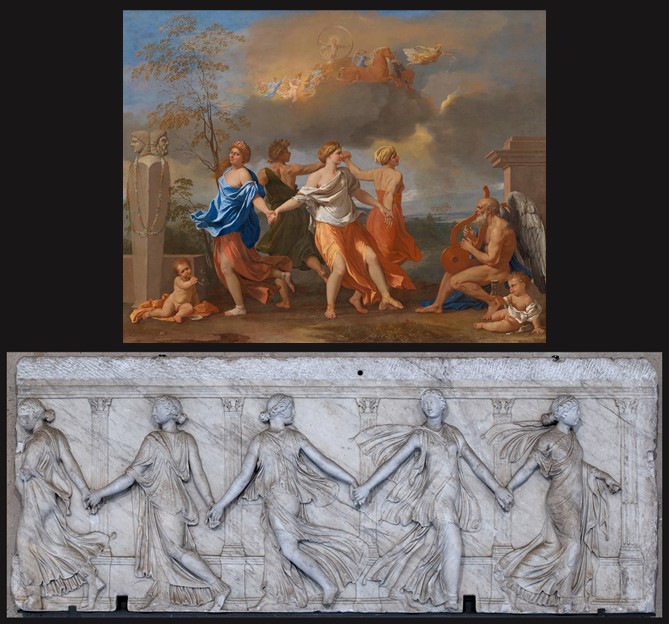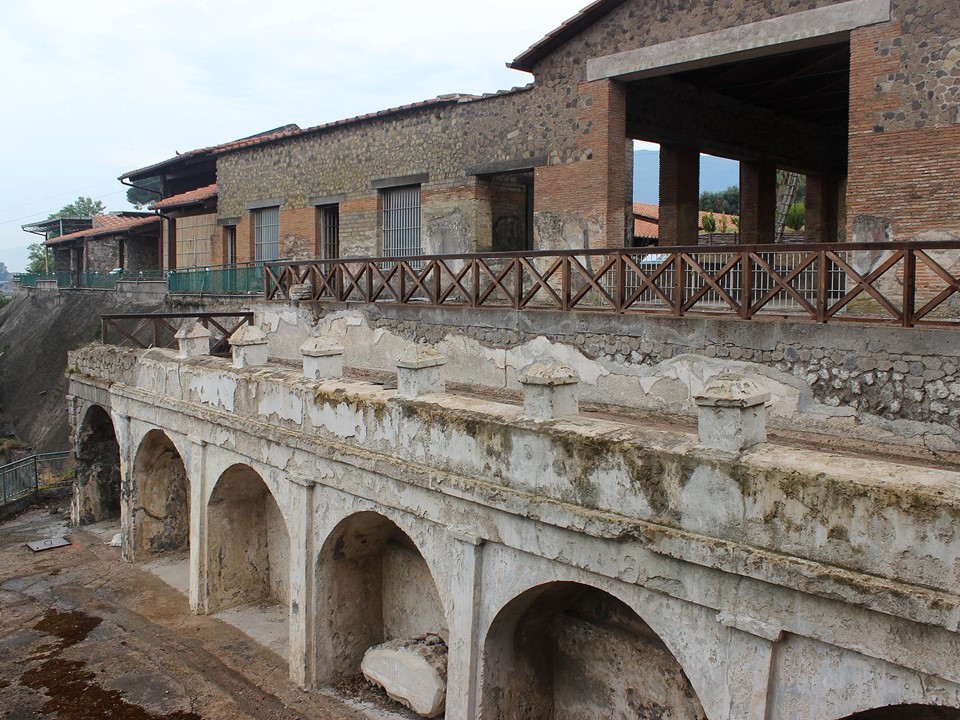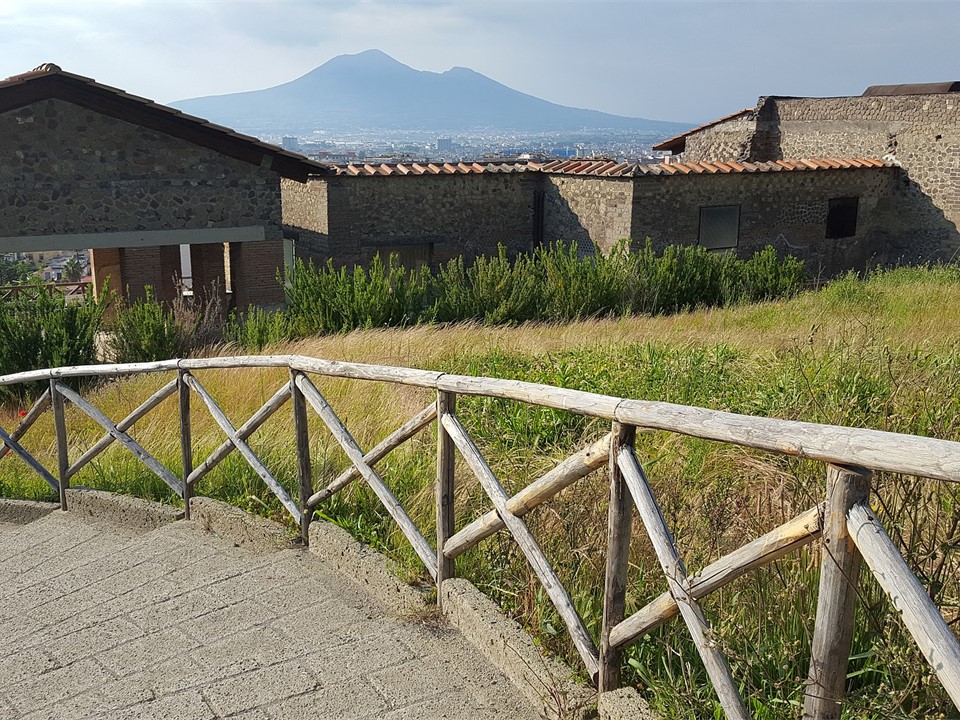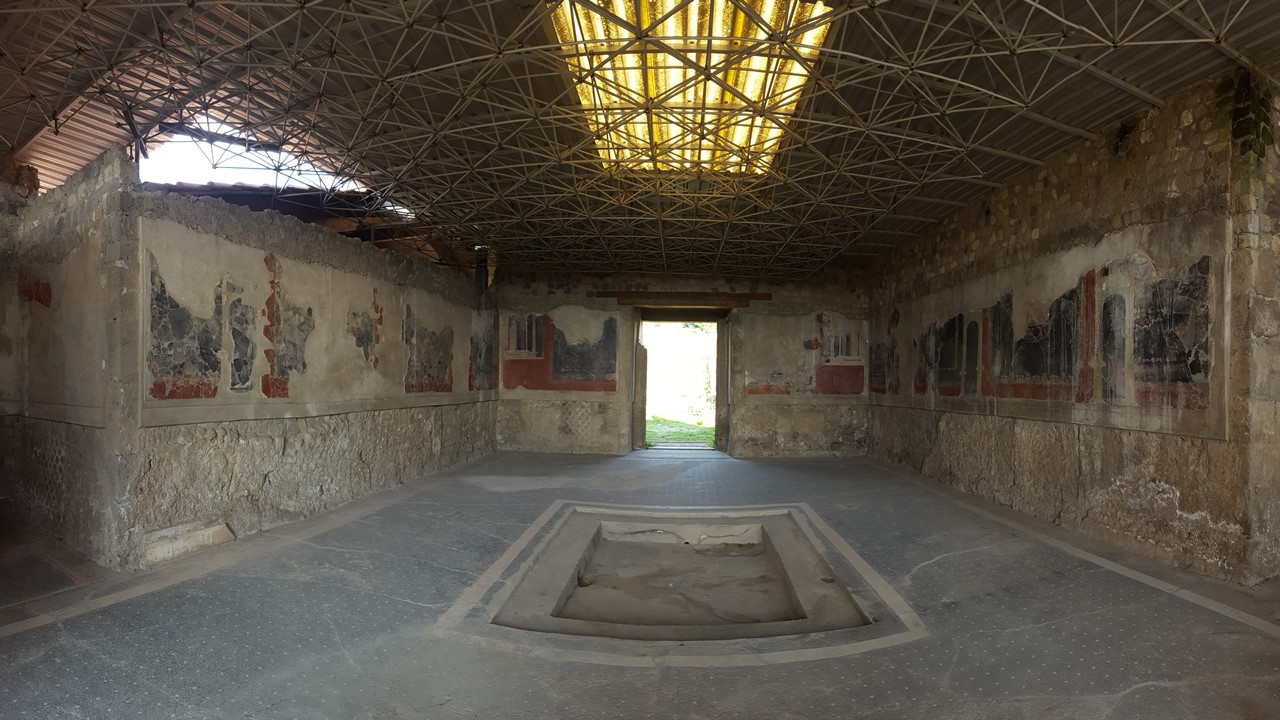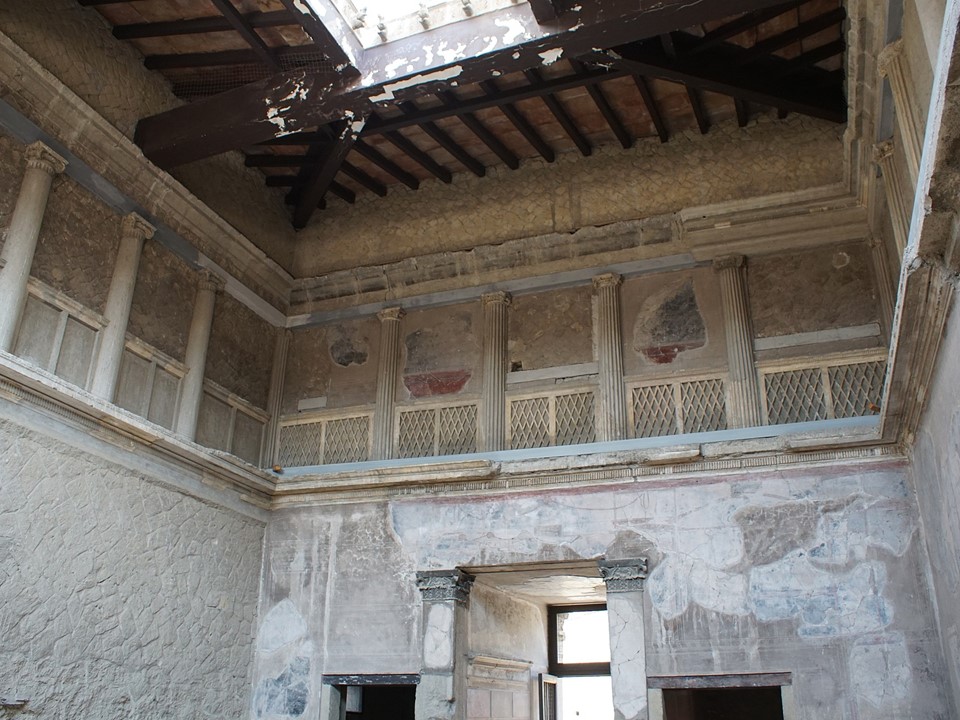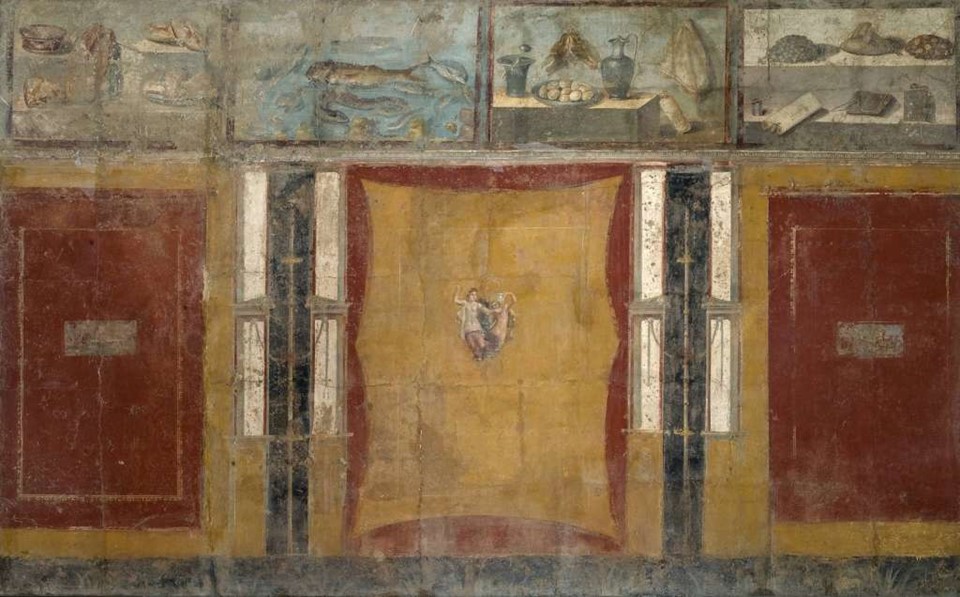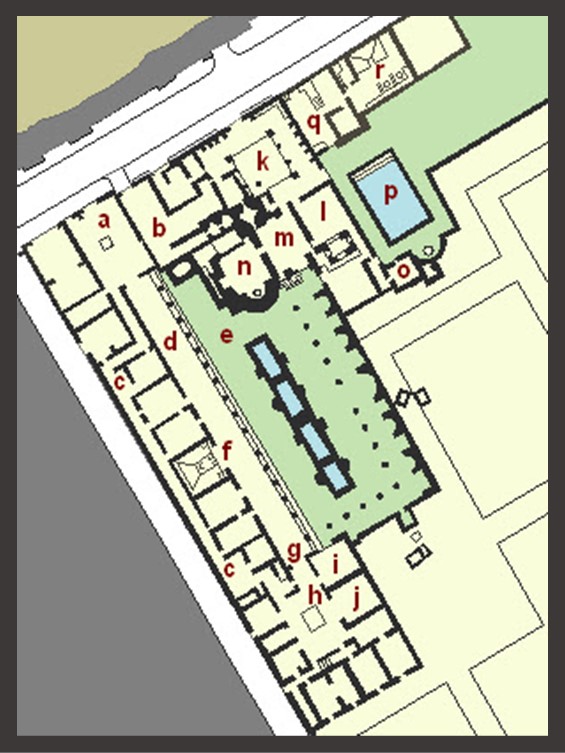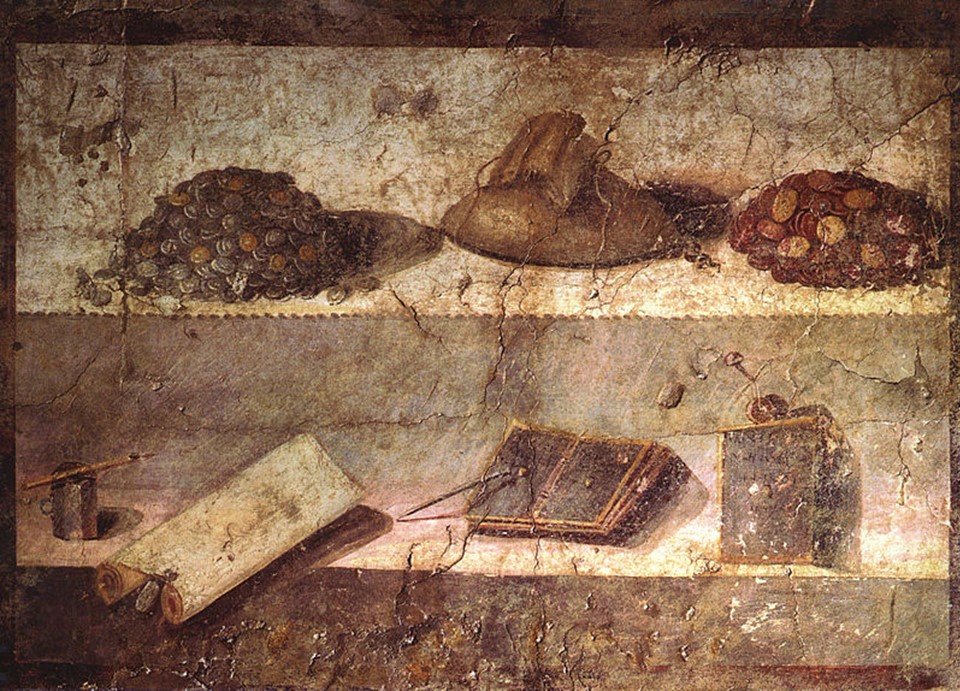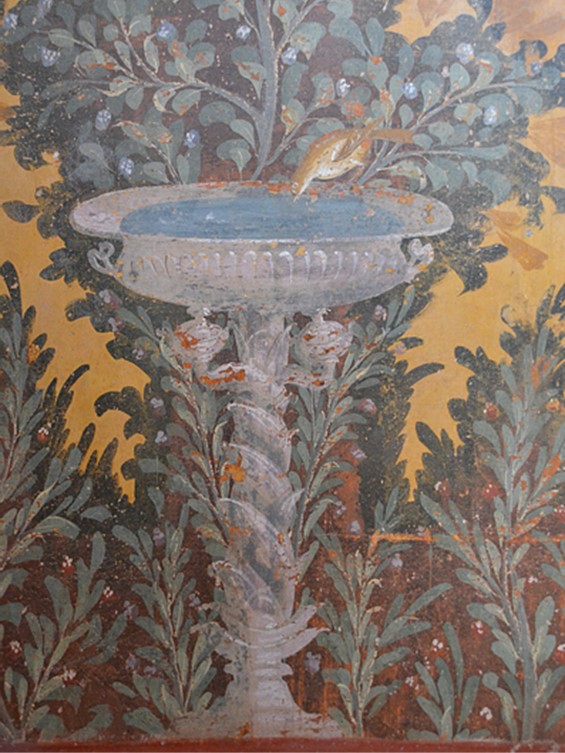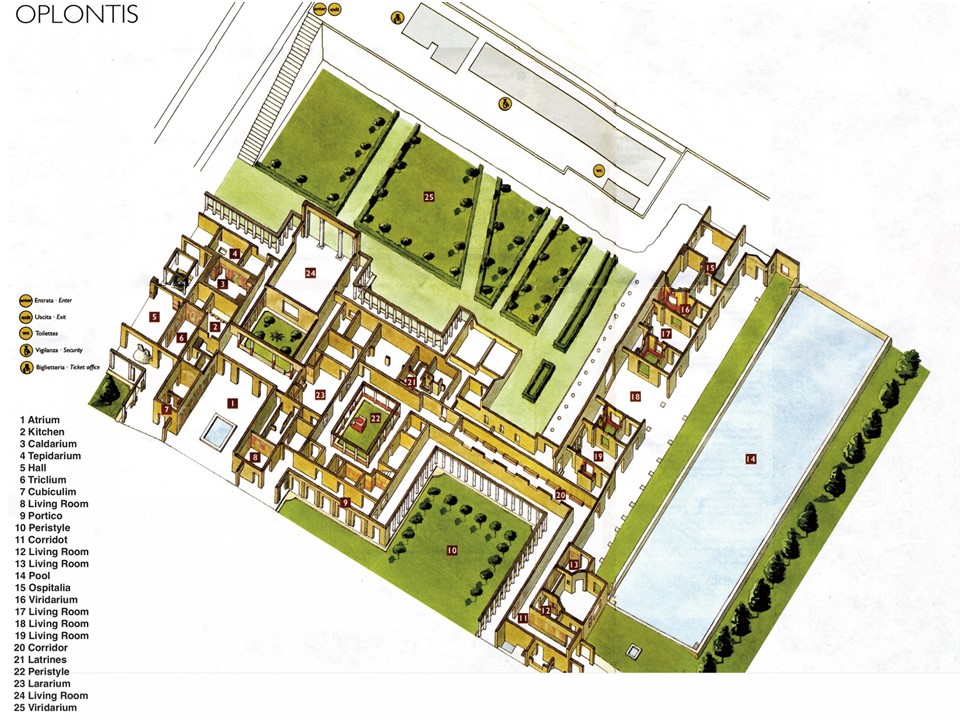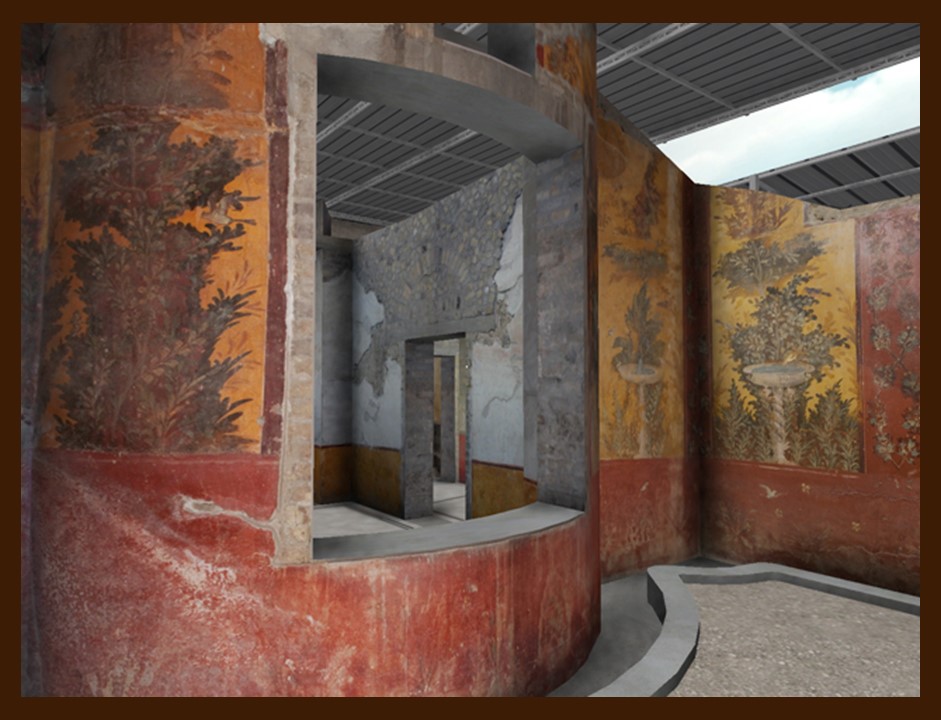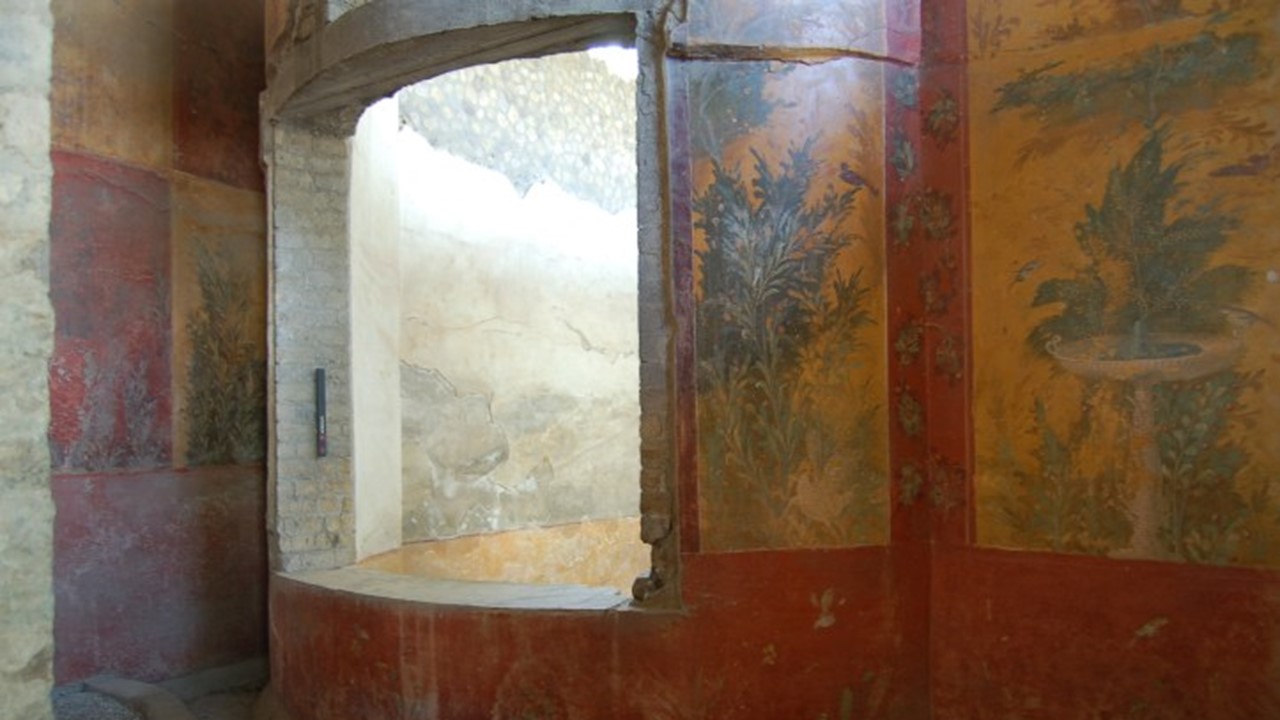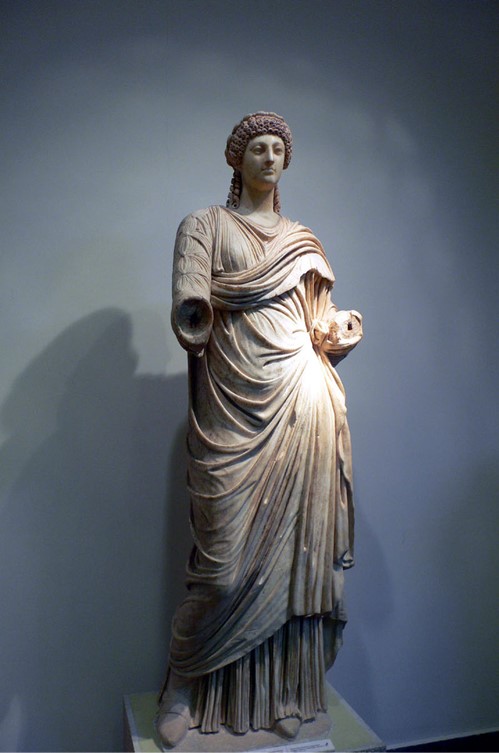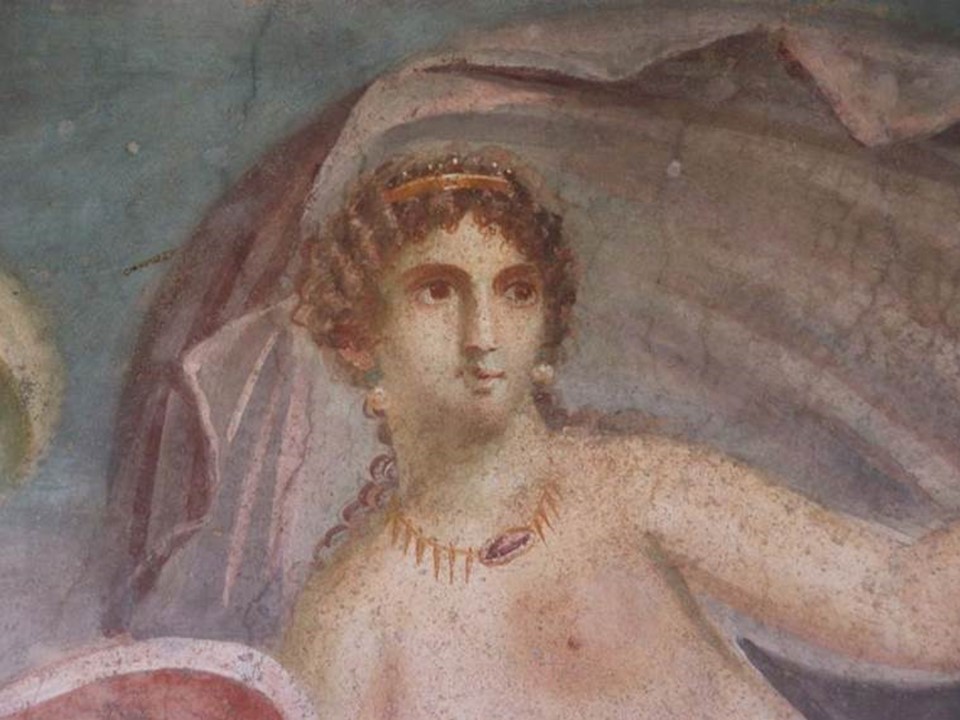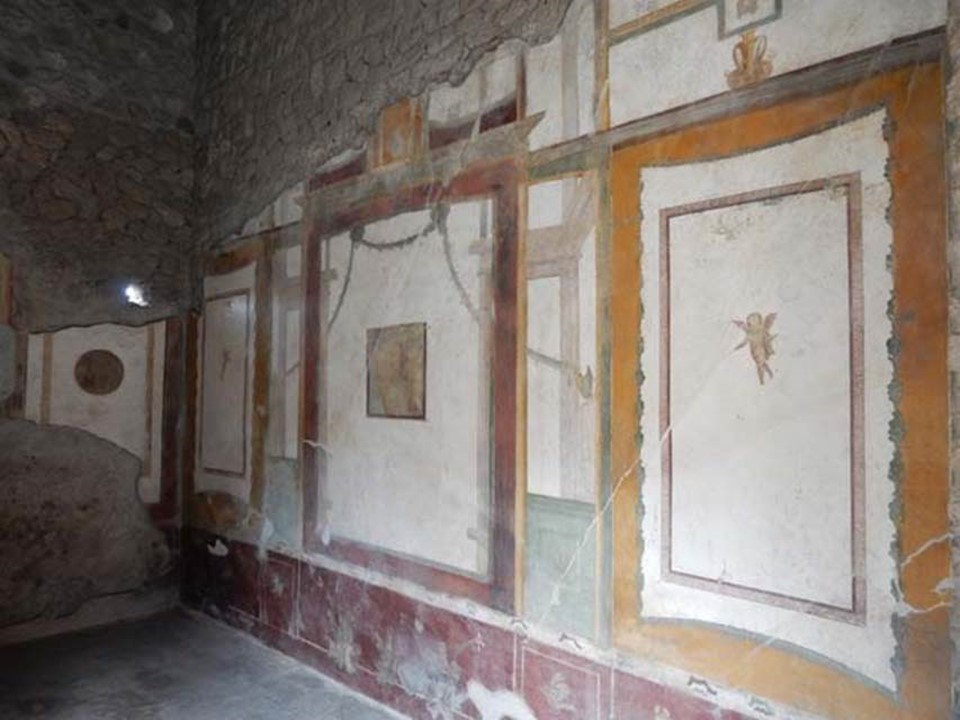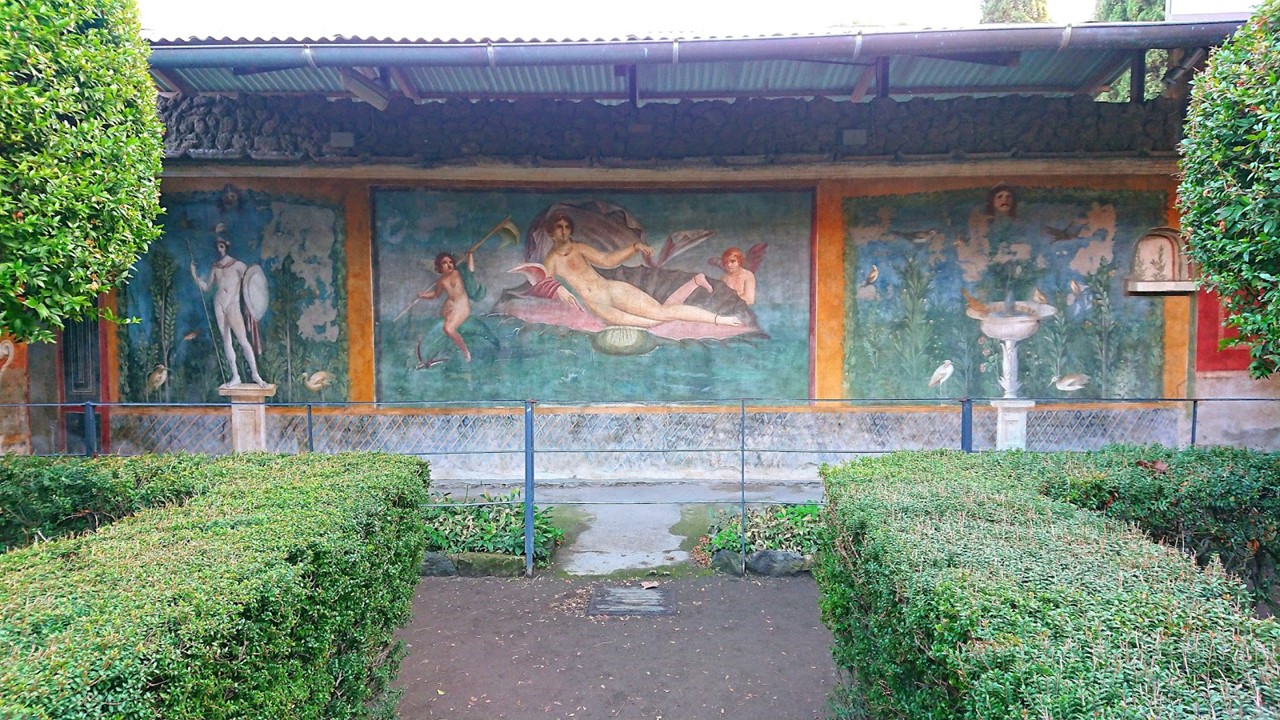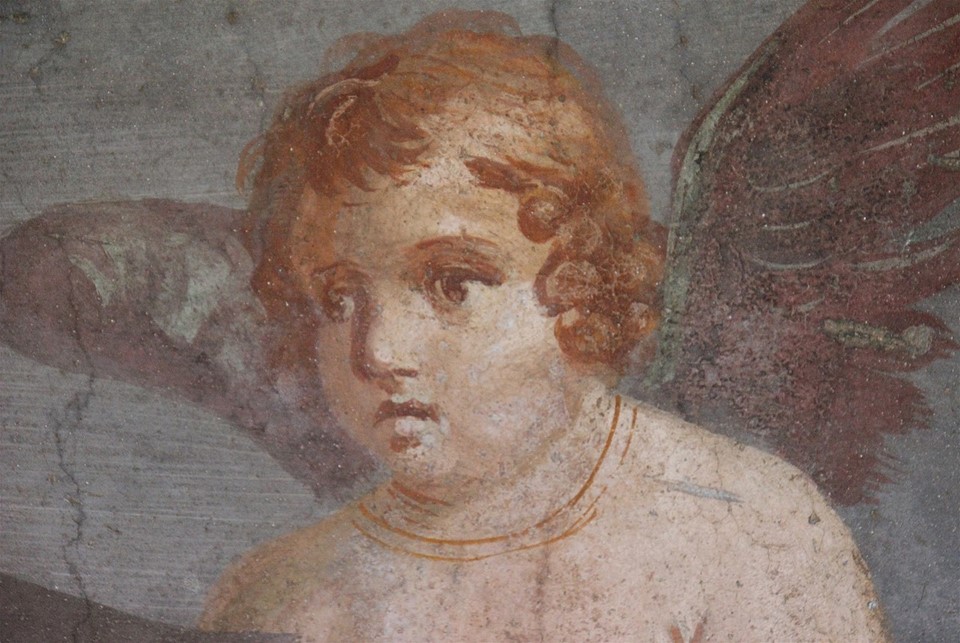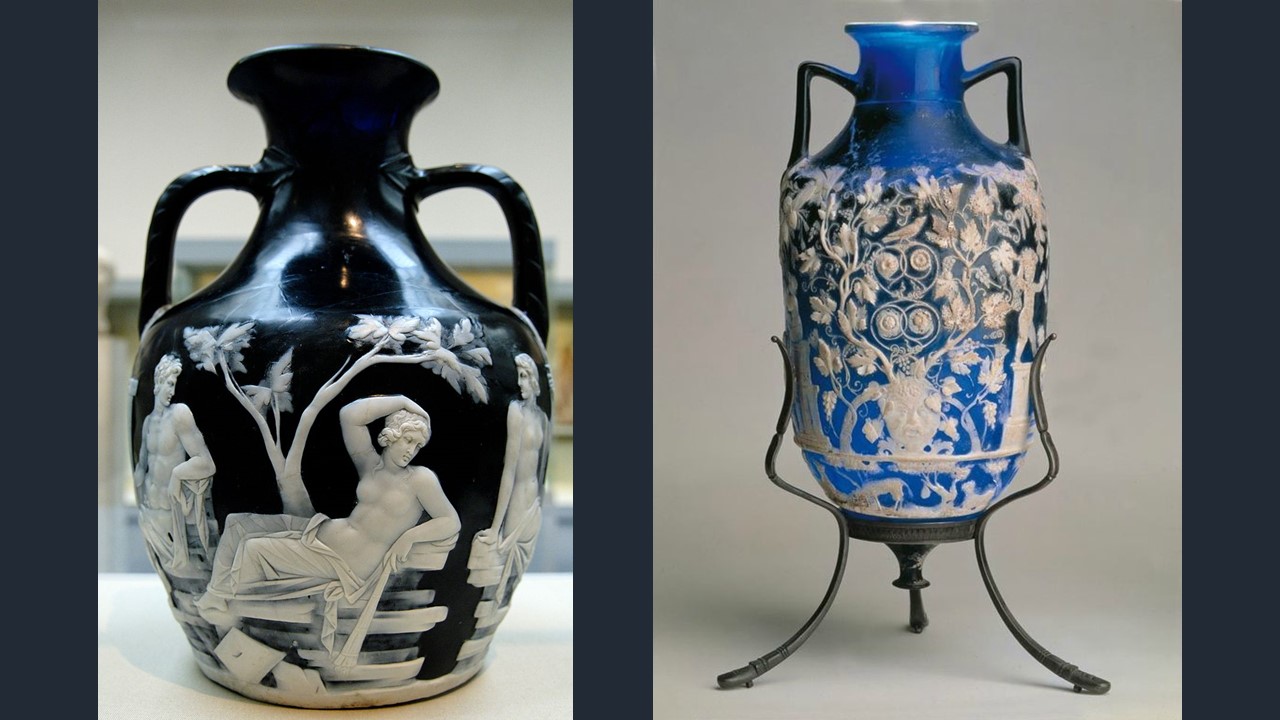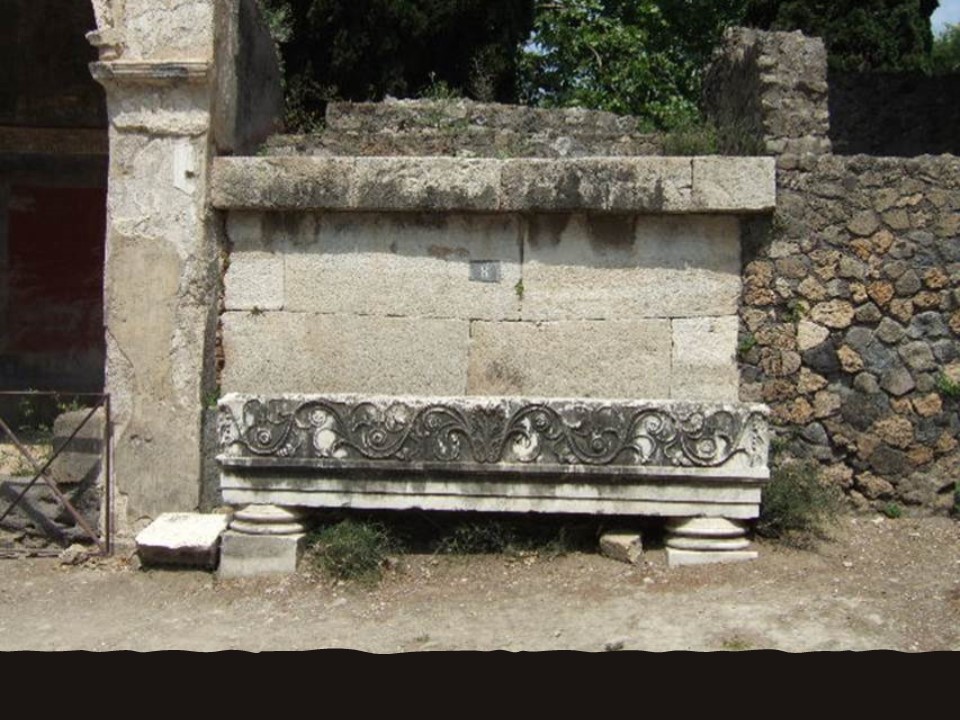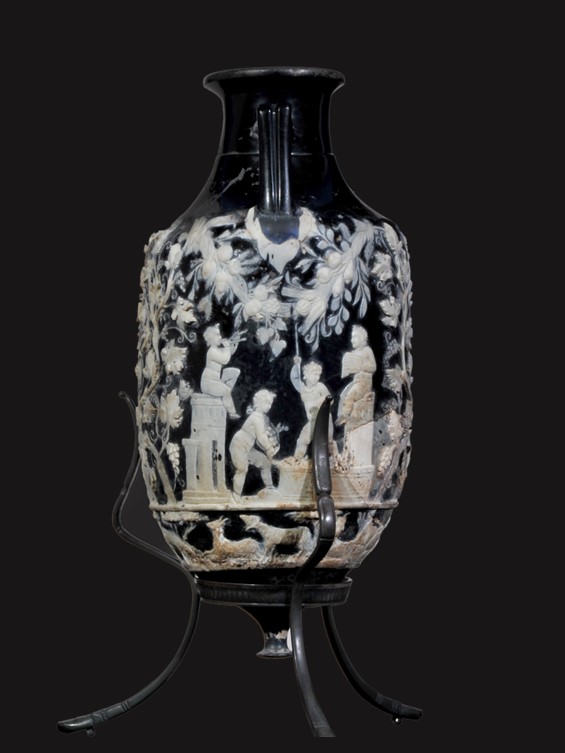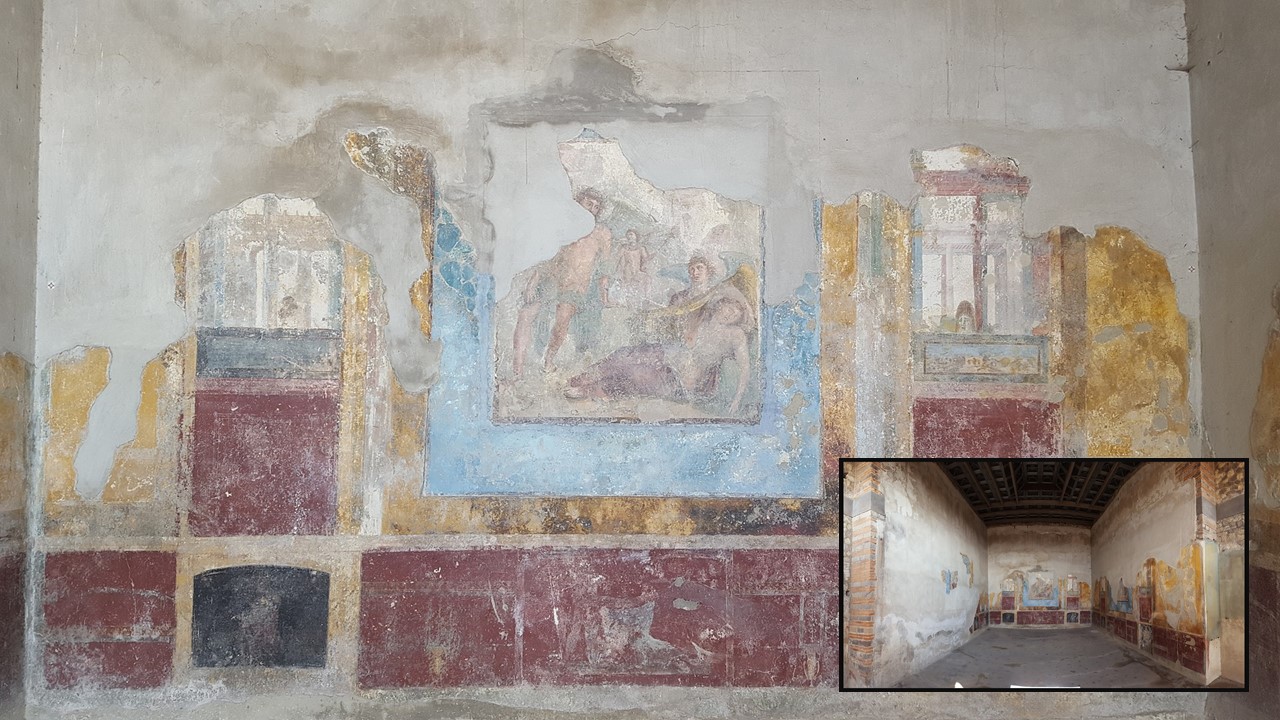
https://commons.wikimedia.org/wiki/Category:Triclinio_3_di_Villa_Arianna#/media/File:Affresco_particolare_23.jpg
https://commons.wikimedia.org/wiki/Category:Triclinio_3_di_Villa_Arianna#/media/File:Mito_ri_Arianna.jpg
Lying in the shadow of Mount Vesuvius… Stabiae is home to a group of enormous, sea-edge, Villae Marittimae, which are set on a cliff above the modern town of Castellammare di Stabia. We know of at least six of these villas, built directly next to one another—a sort of Roman high-rent resort district next to the small town of Stabiae. They were beautifully preserved by the eruption of 79 A.D., with standing walls, some of the highest quality frescoes surviving from antiquity, and some of the most innovative garden architecture in the Roman world. On the 13th of October I presented you with information on Villa Arianna, today, on the 11th of December… let’s discuss Villa Arianna’s Dionysus and Ariadne Fresco. https://www.baslibrary.org/archaeology-odyssey/8/1/5
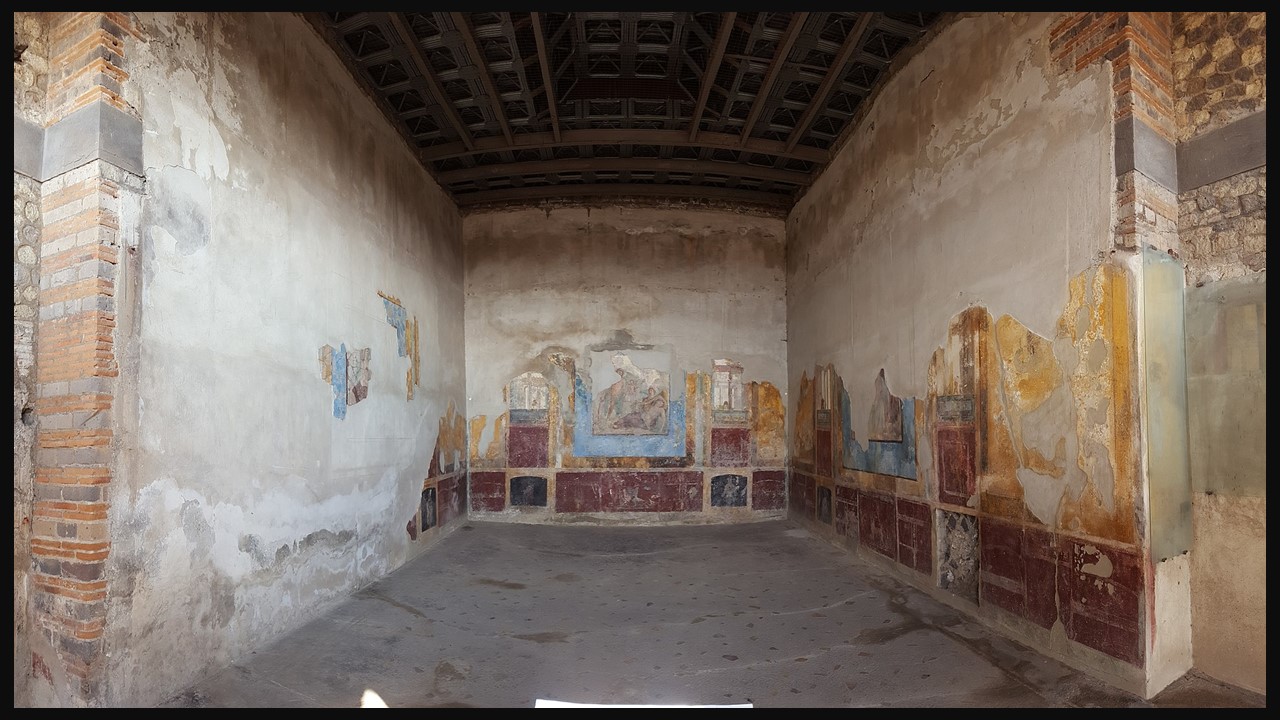
https://commons.wikimedia.org/wiki/Category:Triclinio_3_di_Villa_Arianna#/media/File:Mito_ri_Arianna.jpg

https://www.stabiaholidayhouse.it/en/visit-to-the-ancient-stabiae/
Villa Arianna Plan, Stabiae (after Kockel 1985 with corrections by Allroggen-Bedel A. and De Vos M.) https://www.pompeiiinpictures.com/pompeiiinpictures/VF/Villa_102%20Stabiae%20Villa%20Arianna%20plan.htm
Villa Arianna was lavishly decorated with frescoes and portable furnishings, an undisputed testimony of the expensive lifestyle the owners enjoyed, and evidence of their refined taste and style. One such high-quality fresco, drawing inspiration from the myth of Dionysus and Ariadne, gave the Villa its modern name.
Ιmagine the scene… Theseus and Ariadne flee Crete in a hurry. With the help of Ariadne, Theseus had just killed the horrible Minotaur in the depths of Knossos’s palace maze. Their first stop to rest on their way to Athens is the island of Naxos… where the story unfolds dramatically and excitingly. God Dionysus, in love with Ariadne, appears to Theseus in his sleep and convinces him to abandon Ariadne at Naxos and continue his trip alone. Ariadne, unaware of divine intervention disembarks at Naxos enchanted by the beauty of the island, happily explores it, and tired falls asleep on the beautiful islet of Palatia. When she wakes up… god Dionysus, the son of Zeus and Dione, looks at her adoringly and a new love affair is in the making. A glorious wedding follows and an eternal gift is still with us to admire… the constellation known as Corona Borealis is said to be Dionysus’s wedding gift to Ariadne, a special ornament to adorn her beautiful head.
Please take the time to look at the Villa’s Plan, locate Room 3, and imagine a December Symposium night two thousand years ago…
Villa Arianna’s Dionysus and Ariadne Fresco is a small part of Villa’s grand Triclinium decoration. Room 3 is decorated in the 4th Pompeian Style, elaborate and complex as it can be, combining large-scale Narrative Painting, small Panoramic Vistas, and Still Lifes, within an architectural fantasy of pedestals, aediculae, columns, entablatures, and… theatrical masks! The Villa’s grand Triclinium decoration doesn’t resemble any believable space but instead consists of a variety of architectural elements arranged in an unrealistic manner with an unrealistic perspective, set against a flat background. The three large mythological scenes framed in blue on a yellow and red ground above a lower red and black decorative frieze are the room’s main artistic attraction. A panel presenting the myth of Dionysus and Ariadne decorates the South Wall, a rare scene of Lycurgus and Ambrosia is presented on the West Wall, and on the East Wall, the unknown master painter of the grand Triclinium presented the myth of Zeus and Ganymede. https://depts.washington.edu/hrome/Authors/ninamil7/TheFourStylesofRomanWallPaintings/pub_zbarticle_view_printable.html
Room number 3 was Villa Arianna’s grand Triclinium… the main dining room of a luxurious Roman residence, so-called because of the three banqueting couches (klinai) arranged around the walls. All you have to do is… imagine a warm summer night, overlooking the Bay of Naples, in the company of good friends, bathed in the flickering light, and content with scrumptious food… If you were the owner of Villa Arianna, life was good!
For a Student Activity, please… Check HERE!
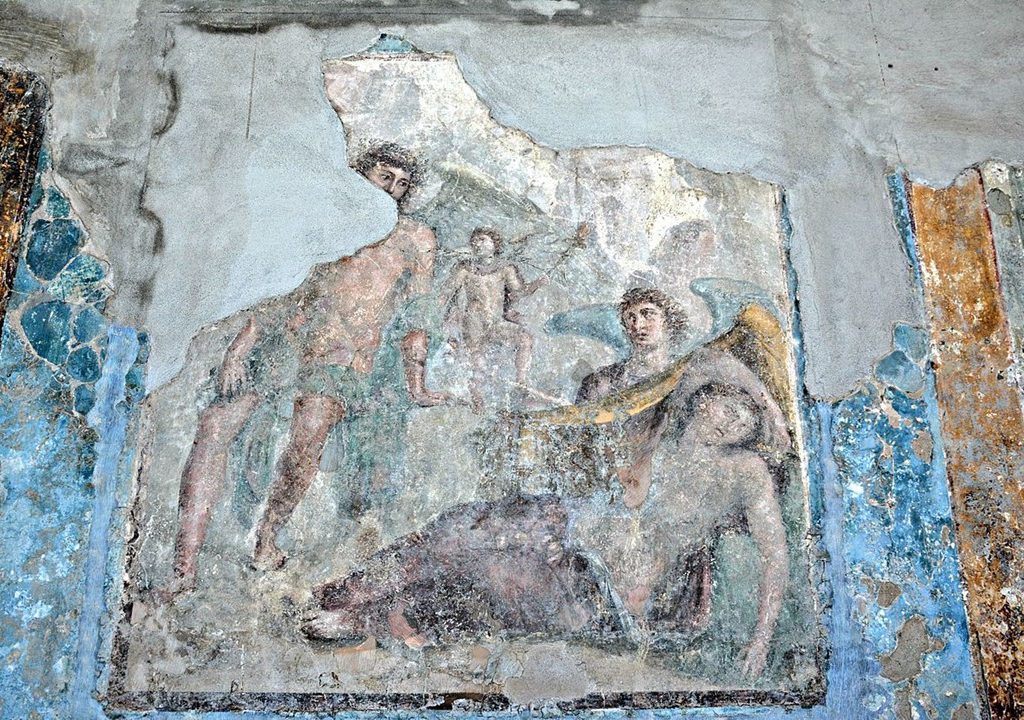
https://en.wikipedia.org/wiki/Stabiae#/media/File:Villa_Arianna_(Stabia)_WLM_099.JPG
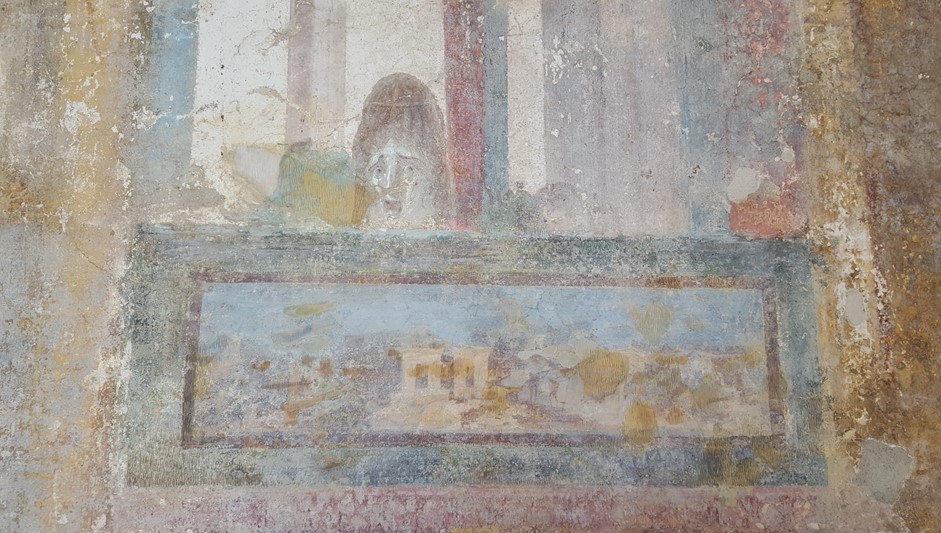
https://commons.wikimedia.org/wiki/Category:Triclinio_3_di_Villa_Arianna#/media/File:Affresco_particolare_7.jpg
